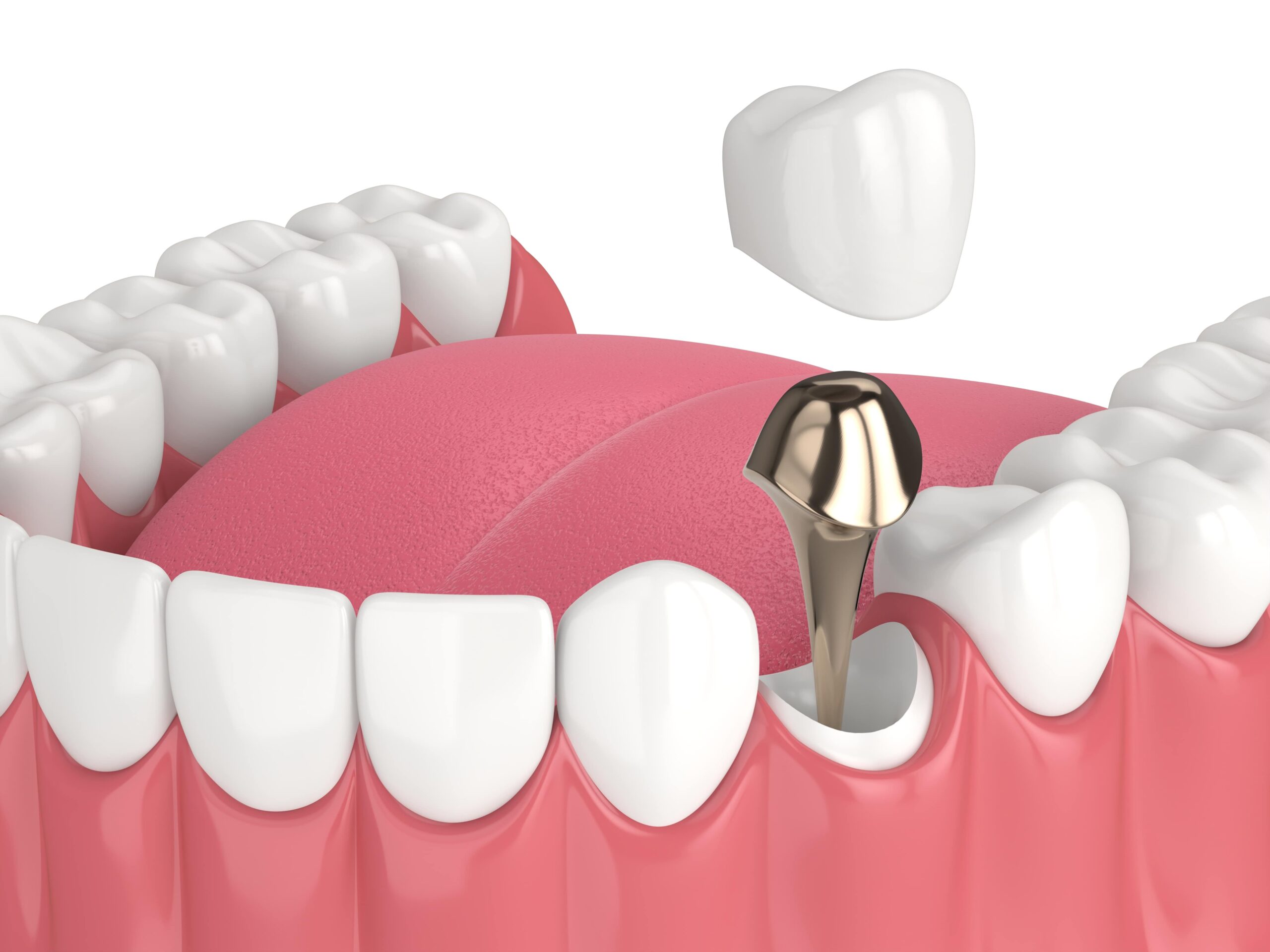When it comes to dental restorations, sometimes a traditional approach is not enough. Certain cases call for a more intricate solution, such as dental post and core treatment. Dental post and core treatment is a versatile and effective procedure aimed at reinforcing damaged teeth that lack sufficient natural structure to support a restoration. By utilizing a post inserted into the root canal and building a core on top, this treatment provides the necessary stability and support for a durable final restoration, such as a crown. In this blog, we will explore the world of dental post and core treatment, shedding light on its significance, procedure, advantages, and potential considerations. Whether you are curious about dental restorations or seeking information for your own dental needs, join us as we uncover the transformative power of dental post and core treatment.
Dental post and core treatment is a restorative dental procedure that involves the placement of a post within the root canal of a severely damaged or decayed tooth, followed by the construction of a core material on top of the post. This treatment is typically recommended when a tooth has minimal remaining structure but requires a stable foundation to support a final restoration, such as a crown. The post, made of metal or fiber-reinforced material, provides structural support and stability within the root canal, while the core material builds up the tooth structure to create a solid base for the final restoration. Dental post and core treatment is a specialized technique that aims to restore both the functionality and aesthetics of a compromised tooth, ultimately enhancing the patient’s oral health and overall well-being.

Post and core treatment offers several significant benefits for patients with severely damaged or decayed teeth. First and foremost, this procedure provides enhanced stability and support to the affected tooth. By placing a post within the root canal and building a core around it, the tooth gains structural reinforcement, allowing it to withstand the forces of biting and chewing. This increased stability promotes long-term durability of the restoration. Moreover, post and core treatment helps preserve the natural tooth structure. Instead of extracting the damaged tooth, this procedure salvages the remaining healthy structure and reinforces it for restoration. This preservation of tooth structure can be beneficial in maintaining the integrity of adjacent teeth and preventing further oral health issues. Furthermore, post and core treatment improves both the aesthetics and functionality of the treated tooth. The final restoration, such as a crown, not only restores the appearance of the tooth but also ensures proper bite alignment and chewing efficiency. Patients can regain their confidence in their smile while enjoying the ability to comfortably bite and chew. Overall, post and core treatment is a reliable and effective solution that combines functional and aesthetic benefits to restore the health and beauty of damaged teeth.
Post and core treatment is typically performed in several stages. The procedure begins with a thorough assessment and diagnosis of the damaged tooth to determine if post and core treatment is the appropriate solution. Once deemed suitable, the tooth is prepared by removing any decay or damaged structure, and the root canal is carefully shaped to accommodate the post. The dentist then selects a suitable post, which can be made of metal or fiber-reinforced material, and inserts it into the root canal. The post provides stability and support for the subsequent core. After the post is securely in place, the dentist builds up a core material, such as composite resin or dental cement, around the post to create a solid foundation for the final restoration. The core material is shaped and sculpted to mimic the natural tooth structure. Once the core has set, a custom-made final restoration, such as a crown or bridge, is fabricated and placed over the core, restoring both the functionality and aesthetics of the damaged tooth. Throughout the procedure, the dentist ensures proper fit, alignment, and occlusion to achieve optimal results.
After the completion of dental post and core treatment, it is crucial to follow the dentist’s post-treatment instructions, maintain excellent oral hygiene practices, and schedule regular dental check-ups. To ensure the long-term success of your post and core treatment, it is crucial to follow proper care practices. Maintaining excellent oral hygiene is paramount, including brushing your teeth at least twice a day with a soft-bristle toothbrush and fluoride toothpaste. Don’t forget to floss daily to clean between the teeth and around the restoration. This routine helps prevent plaque buildup and reduces the risk of decay or gum disease. Treat your restored tooth with care by avoiding excessive force or pressure while biting or chewing hard objects. It’s advisable to steer clear of sticky or hard foods that could potentially dislodge or damage the restoration.
Regular dental check-ups are also essential, as they allow your dentist to monitor the post and core restoration closely. During these visits, your dentist can conduct professional cleanings and address any concerns or irregularities promptly. If you experience any pain, sensitivity, or notice any abnormalities with the treated tooth or restoration, contact your dentist without delay. While dental post and core treatment is generally safe and successful, there are potential complications to be aware of. These include complications during post placement, core failure or fracture, and post-operative sensitivity or pain. It is essential to discuss any concerns with your dentist to mitigate these risks.Reporting such issues enables early evaluation and appropriate management to prevent further complications.
In Conclusion:
Post and core treatment is a valuable and effective dental procedure for restoring severely damaged or decayed teeth. By providing stability, support, and a solid foundation for a final restoration, post and core treatment allows patients to regain their oral health, functionality, and confidence in their smile. By following proper care practices, such as maintaining good oral hygiene, being mindful of eating habits, attending regular dental check-ups, and promptly reporting any issues, patients can maximize the longevity and success of their post and core restorations. With a commitment to oral health and regular dental care, individuals can enjoy the benefits of a restored tooth for years to come.



